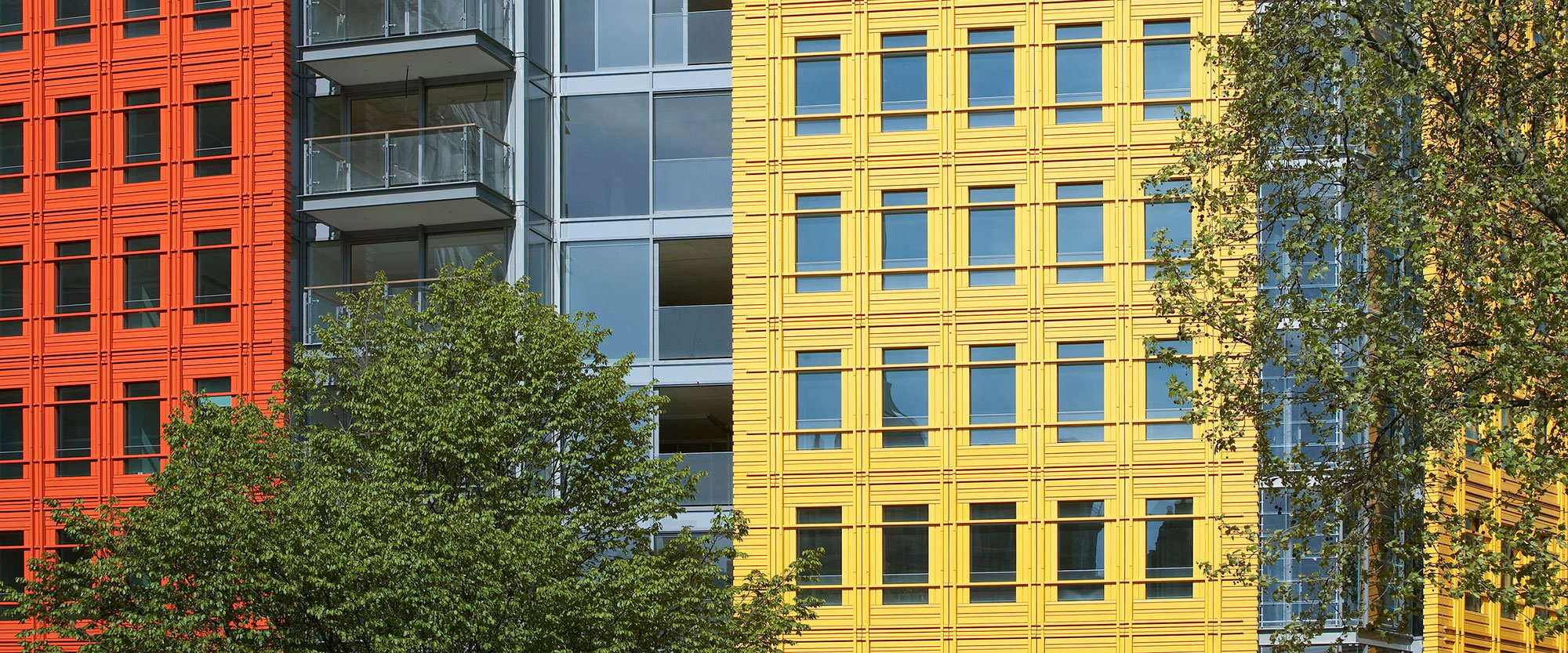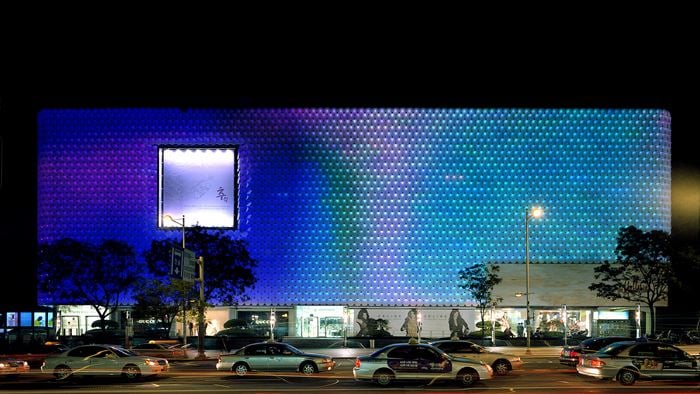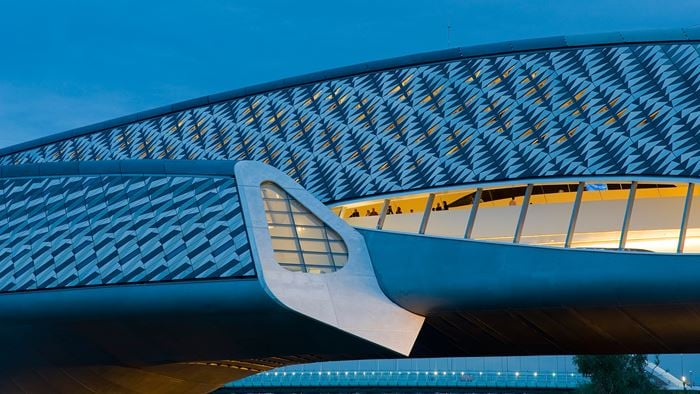It’s time to think bigger about the role facades play in buildings. Beyond simply protecting us from the elements, facades have the potential to actively promote the happiness of their users as multisensory environmental filters.
In Europe, people spend 90% of their time inside buildings and industry is starting to accept that they must be designed to promote health and wellbeing. Building facades are a key part of this as they are our both our connection to and protection from the outdoors.
Facades play a big part in determining the internal building so are therefore both a critical factor and an opportunity to do better. And facades’ multisensory role means they have the potential to have a large and beneficial impact on people’s lives well beyond their standard architectural purpose.
For example, consider how facades conduct daylight. The colour and intensity of facades influence how our bodies produce hormones like melatonin and serotonin – these in turn affect our sense of wakefulness and quality of mood. And views (especially of vegetation or sky) are also psychologically important – improving both our concentration, creativity and productivity.
To design a truly effective façade means tackling a complex combination of building physics, user interaction and operational factors. These are not simple to resolve. While we need daylight, too much glass is bad - it can impair visual comfort for screen users, and the solar gains can cause overheating. So what we could term ‘happier’ façades will require summing marginal gains across multiple factors.
Too often, full height glazing is used without thought, perhaps for aesthetic rather than pragmatic reasons. In reality, full height glazing is often not even 100% glazing – but tall, narrow windows that reduce privacy and end up simply displaying the backs of furniture to the public. The lower part of this glazing still leads to heat loss and gain, but does not contribute much to daylight as it is so low, and often obscured by furniture.
Facades that rely on glazing often require extensive mitigation. Large areas of a building’s glazing might require a coating to reduce heat gains, but in so doing end up reducing the overall daylight level inside. The resulting grey-lit interiors could have been avoided if glazing had been used in a more measured way.
Noise can also adversely affect our mental state, affecting our ability to concentrate, relax and sleep. Noise can cause increased levels of stress hormones, which may have long-term effects on physical health. So improved design of facades must respond to environmental noise and sound transmission considerations in order to function effectively.
Control is important too. Something as simple as the ability to open windows for example, has a positive impact on our stress levels – actually making us better able to cope with discomfort as well as difficult work situations.
Good design sometimes means rethinking the fundamentals, I think it’s time to re-centre the design around the occupant. For facades, it’s time to go beyond business as usual and really consider how buildings get used.
 ;
;




